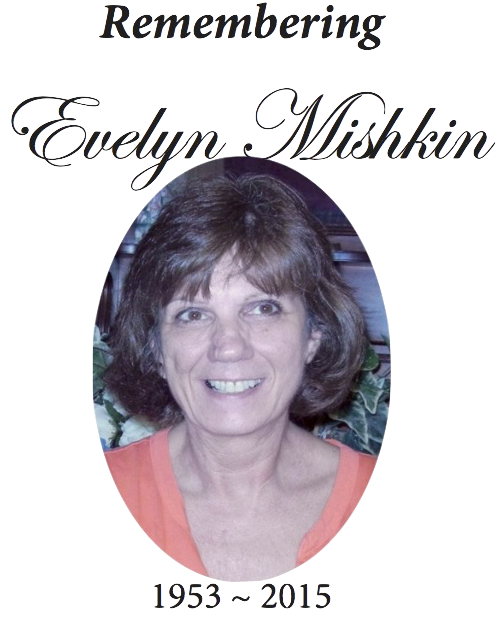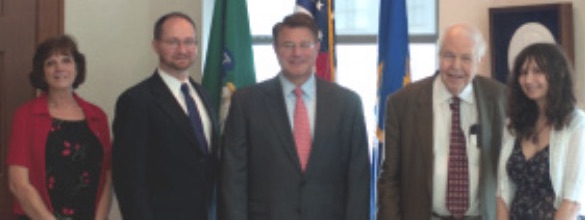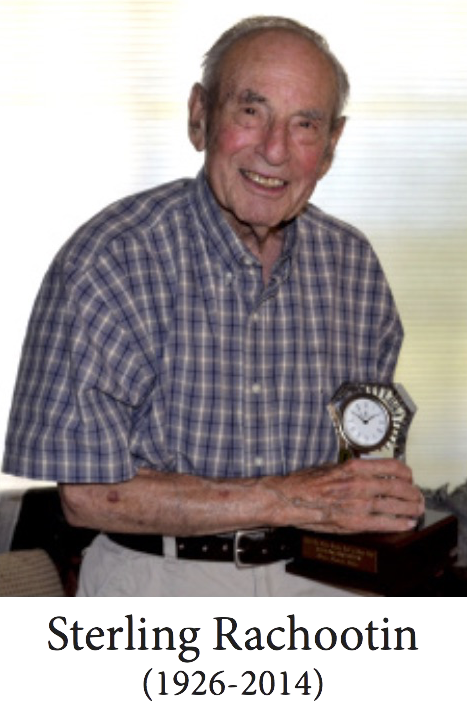Milestones

My Friend Evelyn
If prompted I could write a book about Evelyn. We met in the 1970s when she was undergoing a difficult time with a divorce and I, having been divorced as well, but earlier, was single. She lived in Santa Barbara, California, and I lived in Beverly Hills, two hours away. We became close friends and confidants, sharing our concerns with each other, often by late-night telephone calls that lasted an hour or two. Her maiden name had been Evelyn Rose Castino, and she sought to get an ERC license plate. Sorry, but that was taken. “Why don’t you make it a bit French, as ERCQUE,” I suggested. She did. And I called her that for the rest of her life unless others were around, at which time she was “Evelyn.” We talked about many things, each without asking anything from the other. Time passed, I got married to Christie, and she moved to New Jersey and met and married Harvey. We kept in casual touch through Christmas cards and very occasional letters and shared pictures of our children.
Fast forward to a few years ago. In Succasunna, New Jersey, she and her husband Harvey had raised three fine daughters: Cara, Shaina, and Juliana. Cara was on her own, Shaina was at the University of Massachusetts at Amherst, and Juliana, a talented pianist of concert ability, was nearing her final years in high school. It was, of course, the Internet era by then. Evelyn texted me and asked if we could talk. Of course!
She was a skilled writer and editor, and, as it turned out researcher and graphic artist. She was looking for a new horizon for her talents. At any given time I am usually immersed in researching several books and finalizing one or two. “I have just the project for you!” I exclaimed. I was finishing A Guide Book of Disc Music Boxes, a comprehensive (600 to 800 pages) study of this field, which at the turn of the 20th century was a prominent worldwide industry. I put her in touch with Terry Smythe of the Automatic Musical Instrument Collectors Association (AMICA), the intended publisher. She jumped in to work with Terry and also to help me with esoteric research, such as visiting the factory building that once housed the Symphonion Music Box Company and reporting what she learned. I was impressed!
That was it!
Stack’s Bowers Galleries was working on various books that also involved research and editing, including one on Liberty Head double eagles 1850- 1907 and two on the D. Brent Pogue Collection, not to overlook some work on auction catalogs from our Wolfeboro, New Hampshire office. I put her in touch with Christine Karstedt who was organizing multiple projects. Chris and Evelyn became close friends.
Wait, there’s more!
At the Civil War Token Society John Ostendorf was at the end of five or six years’ of research for United States Civil War Store Cards, third edition (the second edition was ancient, having been published in 1975). Evelyn jumped in with Susan Trask, who was supervising much of the scheduling, and with John. Within a year the book, illustrated with thousands of pictures and 664 pages in length, was a reality! Then came the next project: Patriotic Civil War Tokens, sixth edition. Susan rounded up pictures and information, and Evelyn did the editing and graphics. As of early August this year it was perhaps half finished. Then came Evelyn’s surprise diagnosis of sarcoma. Nine weeks later she was no longer with us.
We all cried. Not often in life does someone pass away and leave such a group of close friends and associates who loved her dearly and a family that did likewise. Her memory will live on—in the books she has done, in the hearts of her friends, and, tangibly in the present memorial edition of the Civil War Token Journal.
Thank you, Evelyn, for having passed our way and enriching our lives.
~Dave Bowers~

Evelyn, Dennis Tucker, U.S. Mint Deputy Director Dick Peterson Dave Bowers & Shaina Mishkin, May, 2013

In Memory of Sterling A. Rachootin
Sterling Albert Rachootin was born on March 18, 1926 in Los Angeles, California, the son of Isadore and Henrietta (Freeman) Rachootin. He passed away on December 28, 2014 in Los Angeles at the age of 88 years. The families of both his parents were of Russian Jewish origin, although Henrietta was born in London when her parents were there before coming to the United States. His parents were married in Chicago, and by 1924 they had relocated to Los Angeles.
Sterling joined the Civil War Token Society in April 1971. He contributed some 89 articles to the
CWTJ over a period of 36 years. His articles were known for their historical and symbolic interpretations, and often explored connections between Civil War tokens and related collectibles such as Civil War scrip and envelopes, paper currency, and even foreign coinage. Thirteen of them were recognized by Literary Awards, of which three were first place awards; an additional four were selected for honorable mentions. Especially noteworthy are his contributions to the Spring 2005 issue of the
Journal, for which he wrote all the feature articles. The cover proclaims this to be “A Sterling Issue!” He was elected to five terms on the CWTS Board of Governors, and served as president of the Society in 1997-98. Sterling was inducted into the CWTS Hall of Fame in 2013.
His father, Isadore Rachootin, came to the United States when he was fourteen years old and had to earn a living from that time. With no further opportunity for education, he was never able to read or write English. His primary language was Yiddish, and his wife was his translator when English was involved. For the first ten years or so in Los Angeles, Isadore was a fruit and vegetable peddler who also ran a concession in Lincoln Park on weekends. In 1936 he was able to open a small neighborhood grocery market. Sterling has given the following description of his father’s work schedule during the 1930s: “My dad worked very hard from 6:30 a.m. to 9:30 p.m., seven days a week, with one day off each year – Yom Kippur. He had to retire after his heart attack in 1944.”
Sterling began collecting stamps when he was ten years old. This was an inexpensive hobby since he collected used stamps which were removed from envelopes; he then traded with friends for other stamps. When some of his friends obtained penny boards and began collecting coins, Sterling planned to follow their lead, especially since his father’s store would provide a convenient source of coins for his collection. However, his father did not take kindly to this idea – the profit margin on a pack of cigarettes was only two cents, and the coin board was just an unproductive use for money which would be at risk of being lost or stolen. So, Sterling had to abandon his penny board collecting idea.
In 1944 Sterling graduated from Belmont High School in Los Angeles. He had just turned eighteen and was subject to the draft for World War II. He joined the U.S. Navy Reserve and was selected for the Navy’s V-12 officer training program. Beginning in July 1944, he attended two terms at Occidental College as the first part of this program. Sterling then entered the Navy on active duty and served for two years with the American occupation forces on Japan. After completing his service he returned to Los Angeles and resumed his college education under the G.I. Bill. He became an elementary school teacher and taught for over 30 years at the Coldwater Canyon Elementary School in North Hollywood, up until his retirement in 1981. He also served as acting vice principal and principal of the summer school, and was a representative for the United Teachers of Los Angeles.
While walking through a Sav-on Drugs store in 1960, he came across a display of pennies in 2x2 holders. He was amazed by the prices listed for what appeared to be common dates, and immediately purchased a Whitman coin folder for Lincoln cents and a copy of the Red Book guide to U.S. coins. Sterling arranged to buy the daily take of change from the cafeteria manager at the school where he taught and became an active coin collector. Subsequently his father-in-law moved to Los Angeles and gave him an old leather purse containing some early Lincoln cents which were accompanied by a strange copper cent-like “coin.” After visiting several coin dealers, he finally found one who identified this as a Civil War token. Sterling was so excited by this discovery that he bought the Fulds’ two little black books on patriotic and store card tokens for $1 each and began collecting Civil War tokens. He then met Jack Detwiler, who encouraged him to join the Civil War Token Society and write articles for our
Journal.
A comprehensive view of Sterling’s extensive collecting interests is given in his paper “I Enjoy Collecting” in the Spring 2001 issue of the
Journal. He was always generous in helping other collectors fill key gaps in their collections, even if it meant giving up a token from his own collection. He also actively encouraged our members to submit their own research and writing to the
Journal. His contributions to our Society went well beyond even the impressive record of service and publication noted above.
–Donald Erlenkotter




